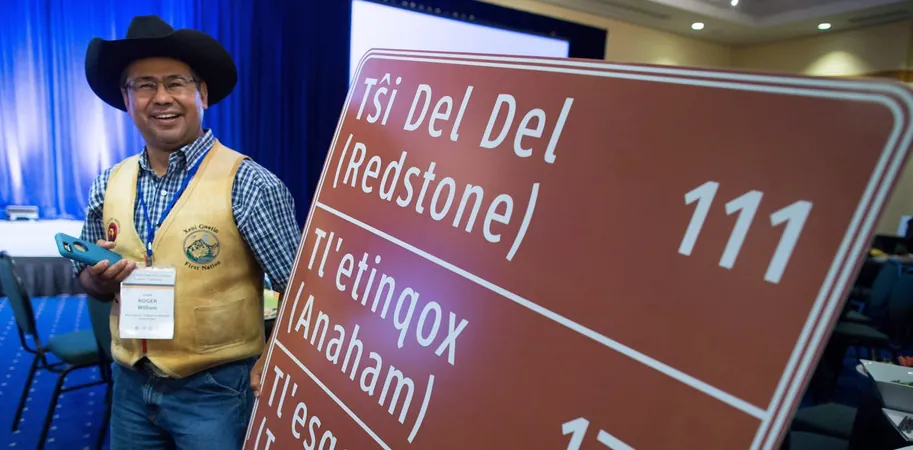
Reviving Indigenous Languages: Can AI Be the Key?
2025-05-11
Author: Noah
The Stark Reality of Language Extinction
Imagine a world where thousands of languages vanish, unheard and unspoken. With around 3,000 languages teetering on the brink of extinction, largely due to colonization, globalization, and cultural assimilation, the urgency for revival has never been greater. According to Canada's Commission for Indigenous Languages, no Indigenous language in the country is considered safe, with all facing varying degrees of endangerment.
AI: A Double-Edged Sword for Language Preservation
In an era dominated by artificial intelligence, the question arises: Can AI be harnessed to bolster Indigenous language survival? Currently, most AI chatbots are trained predominantly on just 100 of the world’s 7,000 languages, leaving countless languages unrepresented. This raises concerns about whether AI will aid in revitalizing endangered languages or contribute further to their decline.
A Revolutionary Idea: Language in a Box
At a recent TEDx talk, Northern Cheyenne engineer Michael Running Wolf unveiled an innovative solution: a cedar box equipped with offline AI that offers voice-based language curricula, effectively creating 'a language in a box.' He envisions this technology assisting learners in mastering pronunciation, breathing new life into languages that may soon fade away.
Empowering Indigenous Innovations
Running Wolf’s project emphasizes Indigenous data sovereignty, ensuring that Indigenous populations maintain control over their languages and data. This initiative aims to leverage AI, similar to how devices like Amazon Alexa operate, helping users accurately pronounce unfamiliar sounds and solidify their skills.
Bridging the Language Gap in the Philippines
Across the globe in the Philippines, AI advocate Anna Mae Yu Lamentillo is championing the preservation of Indigenous languages through her creation of NightOwlGPT, an AI translation app designed to support nine endangered languages. Her vision is clear: every language, not just the dominant ones, should find its place in the digital landscape.
AI and the Risk of New Colonialism
Lamentillo warns that, if not approached inclusively, AI’s rapid progression could mirror historical colonization patterns. She questions, "What happens when 99 percent of languages are left behind?" This issue transcends linguistics; it poses significant concerns regarding accessibility, representation, and equity in the digital realm.
A Global Initiative: Collecting Voices for the Future
In Africa, linguist Emmanuel Ngué Um and his team are striving to tackle these challenges by using Mozilla's Common Voice platform to build open-source datasets featuring audio in 31 African languages. They aim for inclusivity in speech recognition, though challenges such as dialectical diversity and the lack of standardized writing systems complicate their efforts.
The Future of Language Learning with AI
As AI continues evolving, its potential to aid in learning and communicating in underserved languages looks promising—if there’s sufficient funding, accurate data, and a community willing to engage. For initiatives like Ngué Um’s, the integration of thoughtful, culturally aware approaches is essential. Ultimately, ensuring data sovereignty and equitable access to these AI tools must be the priority.
Conclusion: A Path Forward
In a world where countless languages are at risk, the integration of AI into language preservation efforts could mark the beginning of a new chapter. The collaboration of Indigenous technologists, linguists, and communities stands as a beacon of hope, offering a chance to preserve the rich tapestry of global languages for future generations.









 Brasil (PT)
Brasil (PT)
 Canada (EN)
Canada (EN)
 Chile (ES)
Chile (ES)
 Česko (CS)
Česko (CS)
 대한민국 (KO)
대한민국 (KO)
 España (ES)
España (ES)
 France (FR)
France (FR)
 Hong Kong (EN)
Hong Kong (EN)
 Italia (IT)
Italia (IT)
 日本 (JA)
日本 (JA)
 Magyarország (HU)
Magyarország (HU)
 Norge (NO)
Norge (NO)
 Polska (PL)
Polska (PL)
 Schweiz (DE)
Schweiz (DE)
 Singapore (EN)
Singapore (EN)
 Sverige (SV)
Sverige (SV)
 Suomi (FI)
Suomi (FI)
 Türkiye (TR)
Türkiye (TR)
 الإمارات العربية المتحدة (AR)
الإمارات العربية المتحدة (AR)